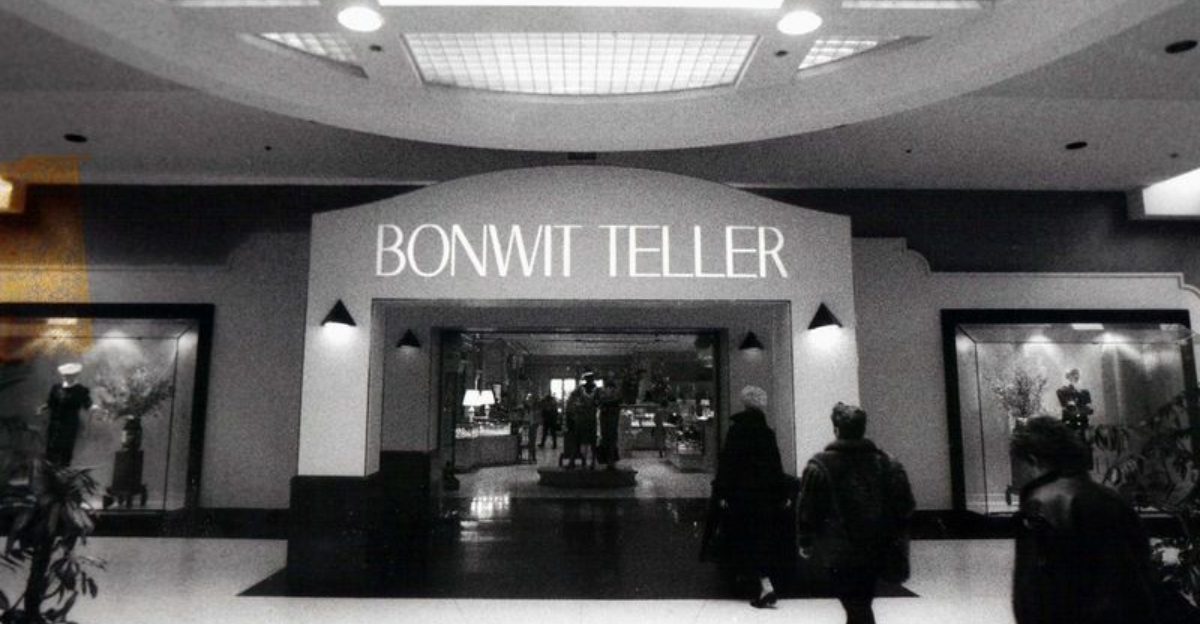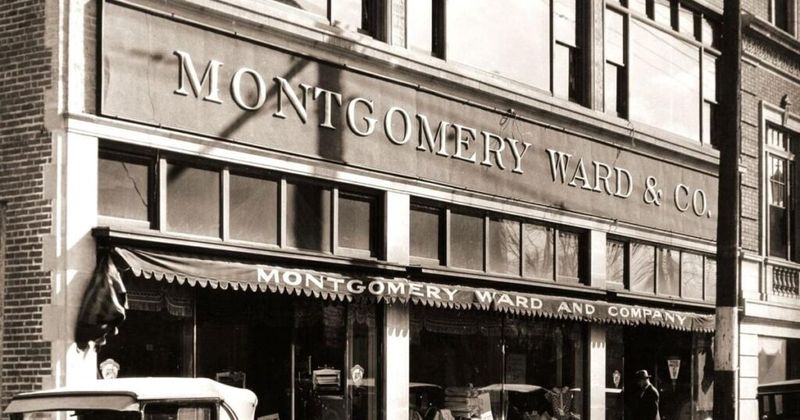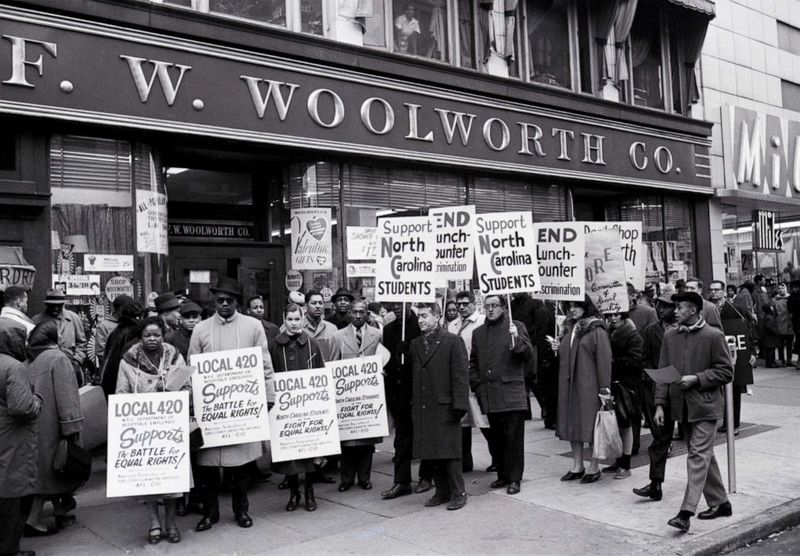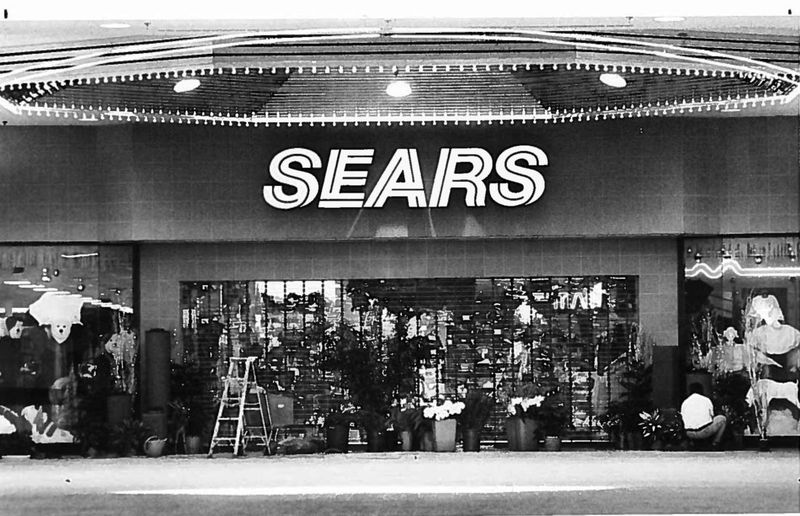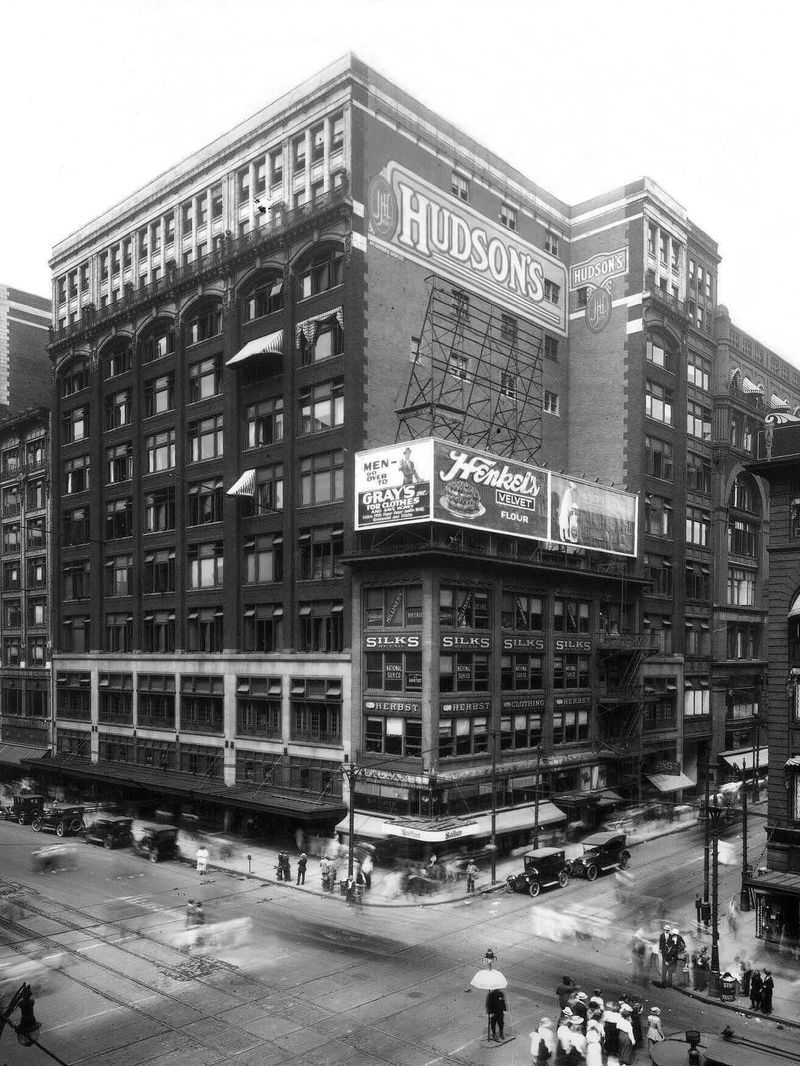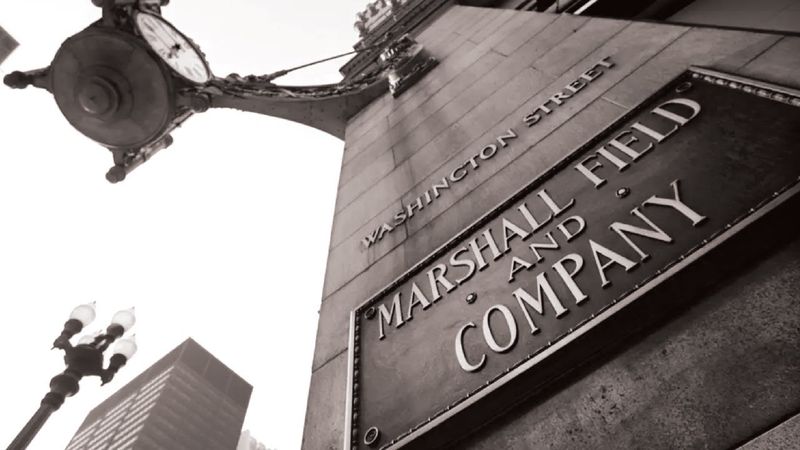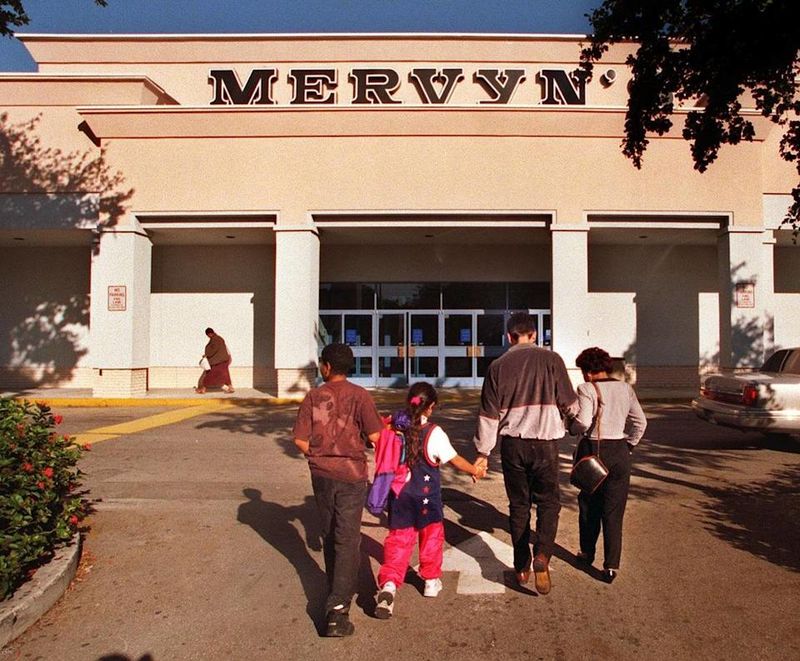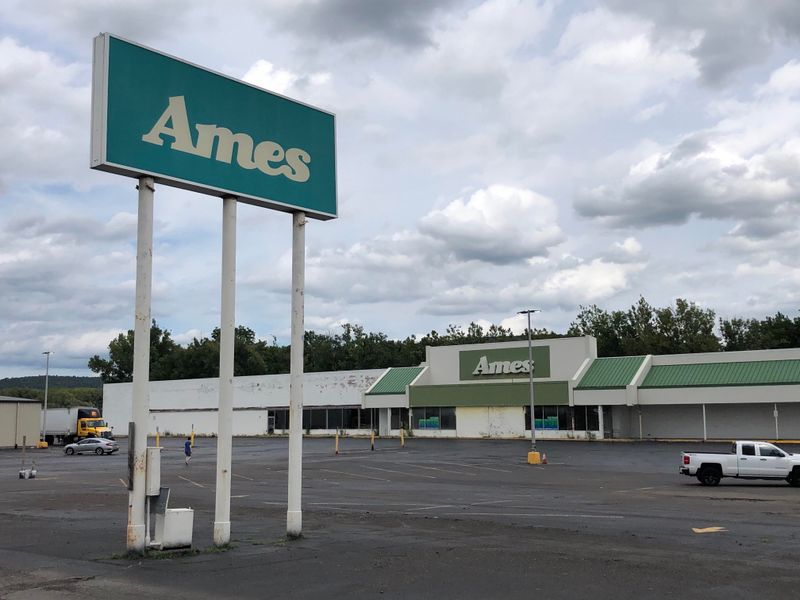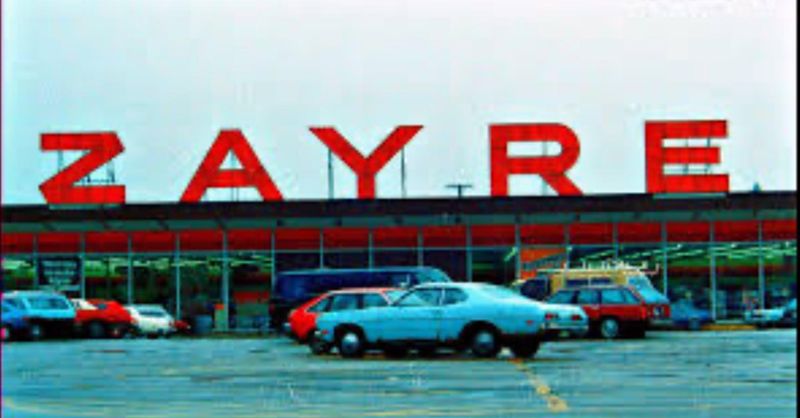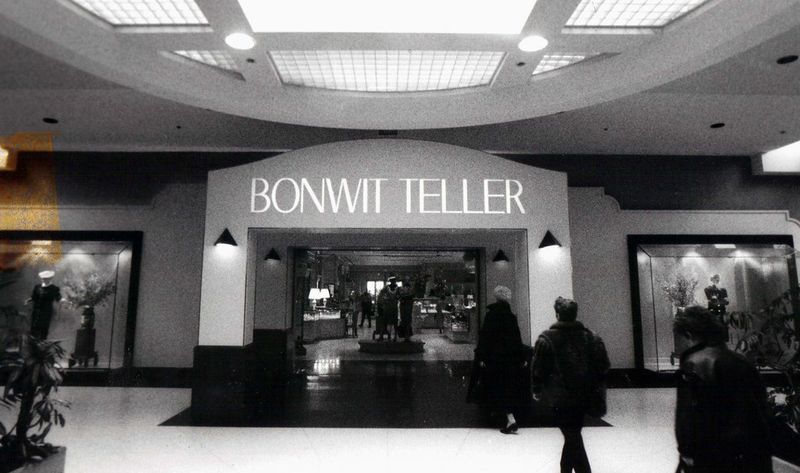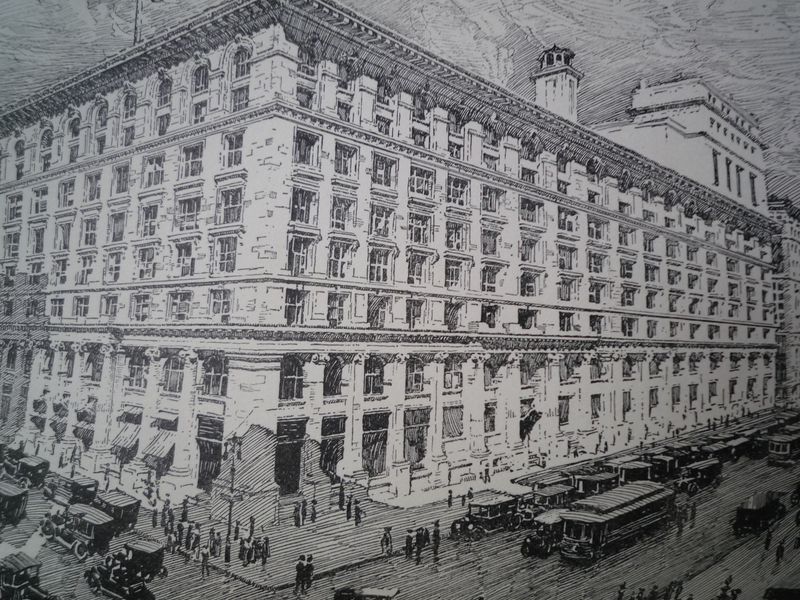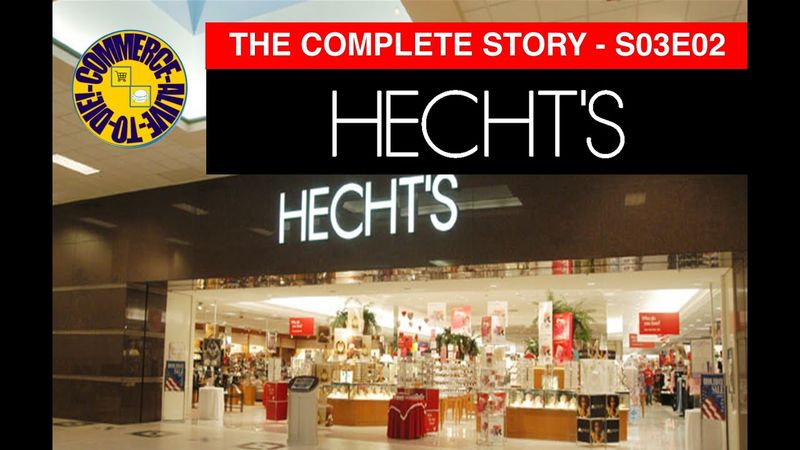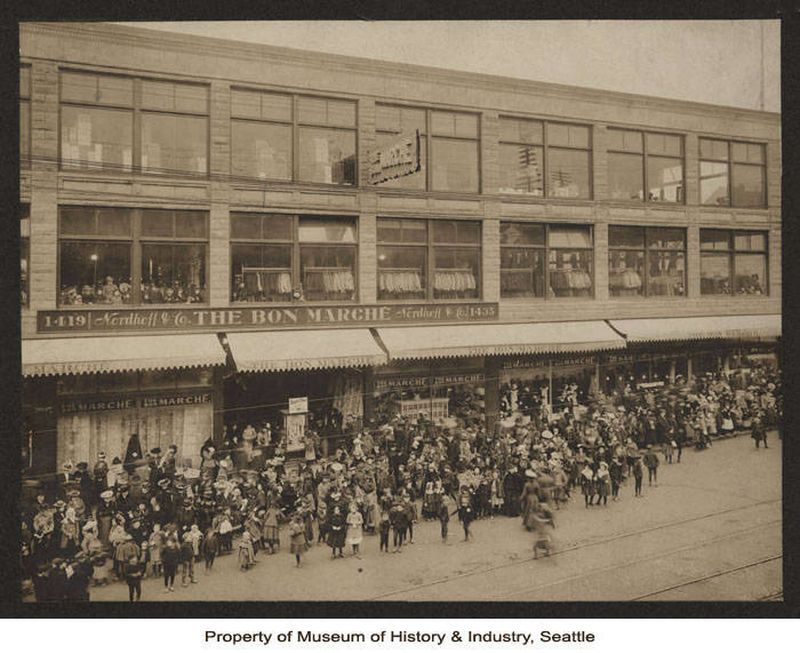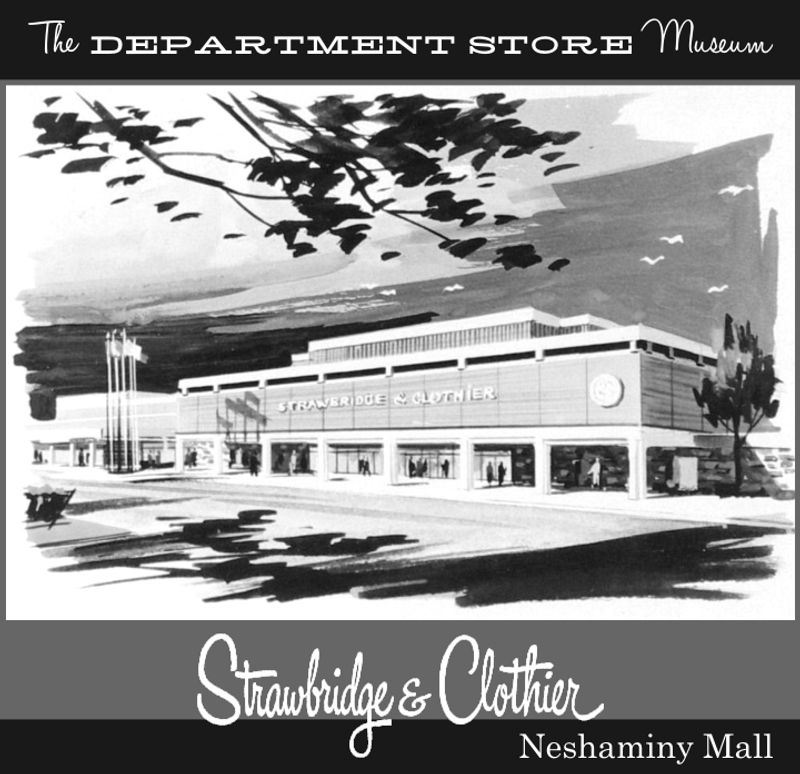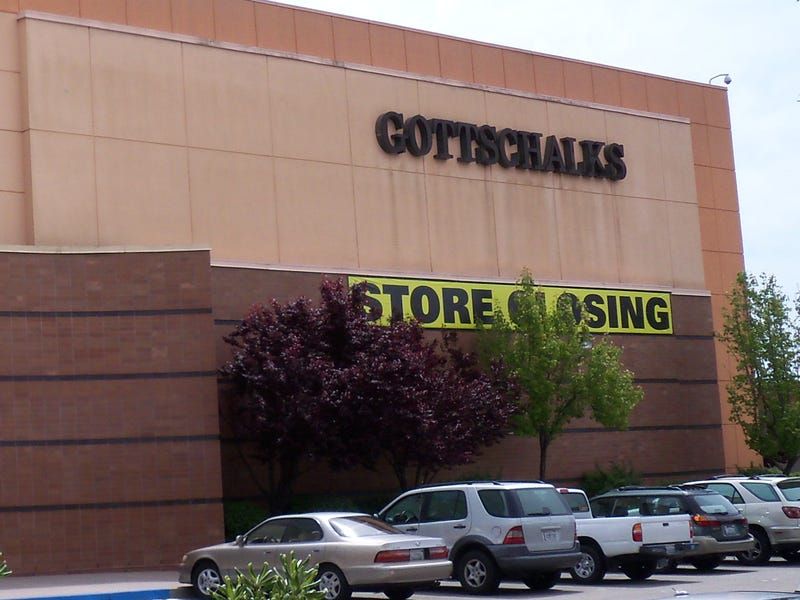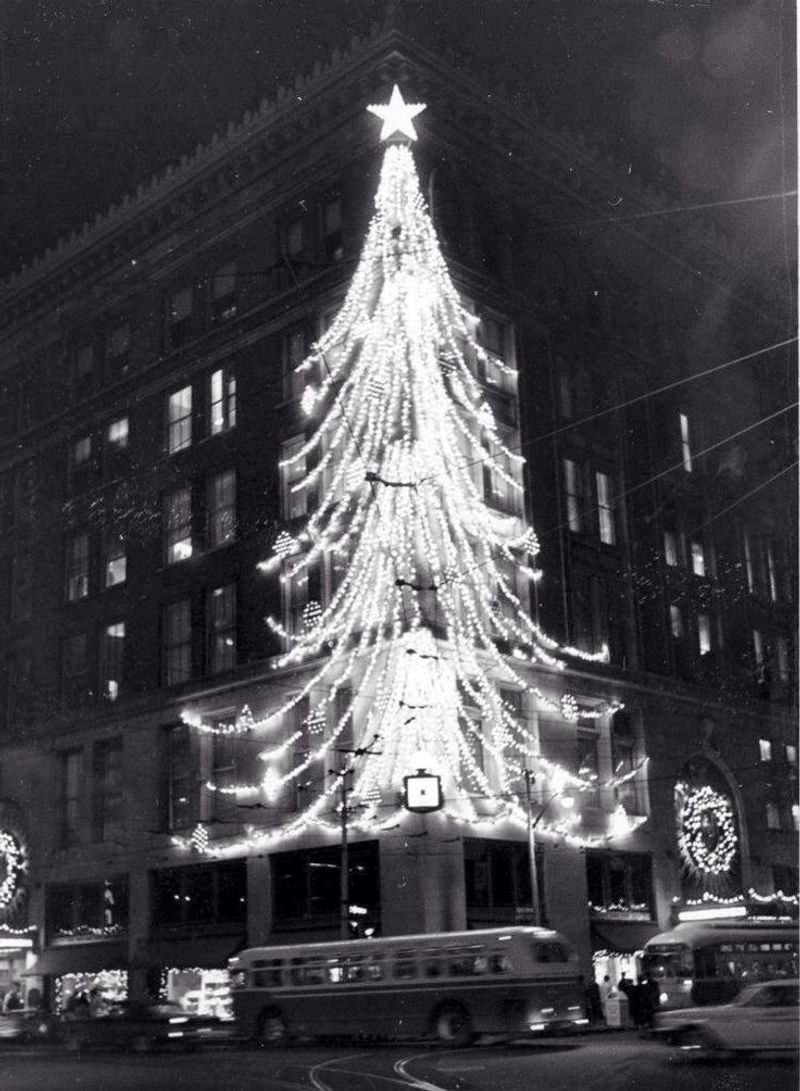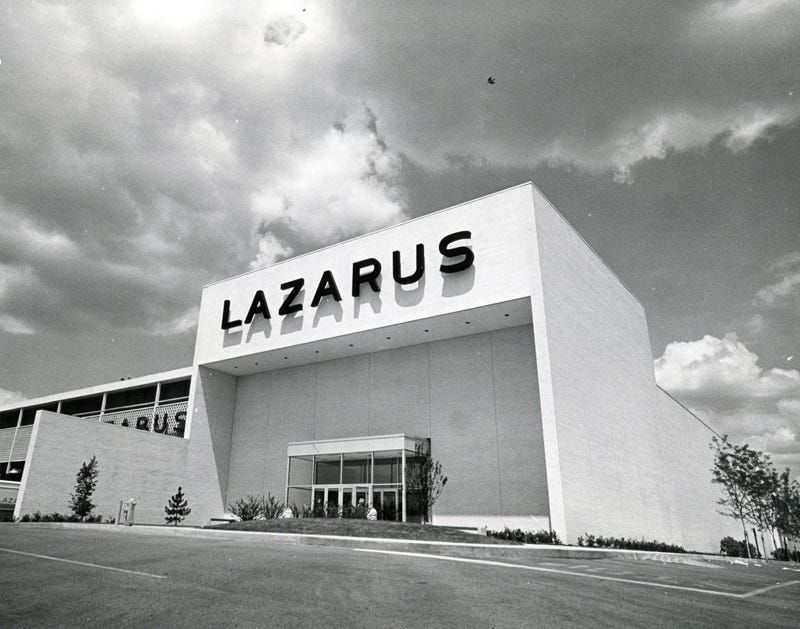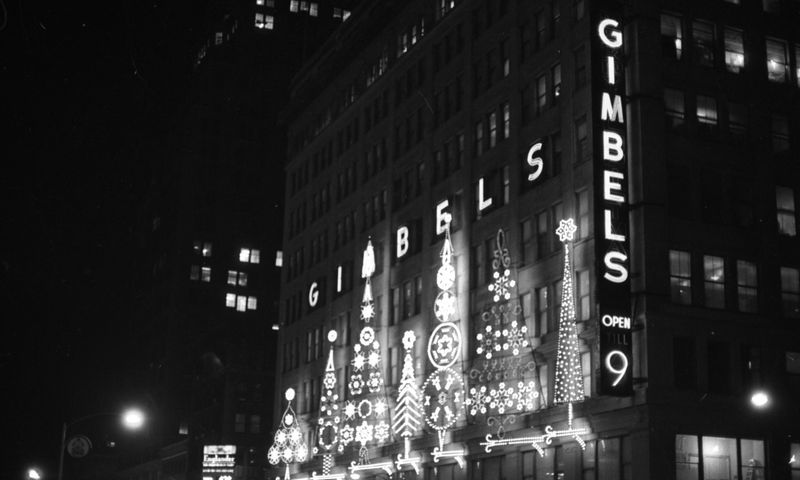Explore the fascinating stories behind 22 iconic department stores that once ruled the retail scene but have now vanished from our streets and shopping malls.
From pioneering mail-order services to hosting unforgettable holiday displays, each of these stores left a lasting impact on American culture.
Dive into the unique history and charm of these beloved institutions.
1. Montgomery Ward
Montgomery Ward, often touted as a trailblazer in the mail-order retail sector, once rivaled giants like Sears in the heyday of American retail. Established in 1872, it captivated the nation with its expansive catalog offerings.
Imagine flipping through pages of everything from farm supplies to fashionable dresses! However, the advent of digital retailing and fierce competition eventually led to its closure in 2001.
The final farewell marked the end of an era, leaving behind warm memories for countless families who relied on its dependable service and wide selection.
Though gone, Montgomery Ward’s legacy as a retail innovator lives on in the annals of shopping history.
2. Woolworth’s
Woolworth’s, a cornerstone of American town centers, was famous not just for shopping, but for its vibrant lunch counters. These bustling hubs offered more than just a meal; they were a gathering place where friends met and communities connected.
In its prime, Woolworth’s offered an eclectic array of goods at unbeatable prices, embodying the notion of ‘five-and-dime’ shopping. Sadly, the retail landscape shifted, and by 1997, Woolworth’s U.S. stores closed their doors.
Yet, the legacy of those iconic counters and the warm sense of community they fostered remains a cherished chapter in retail lore.
3. Sears (almost gone)
Sears was once the grand king of American retail, a one-stop emporium for everything from tools to toys. Its catalogs were an integral part of American households, inspiring dreams with every turn of the page.
However, the rise of online shopping and internal struggles saw Sears’ empire crumble, with most stores shuttered after its 2018 bankruptcy.
Though only a few locations remain, Sears’ influence in shaping retail trends is undeniable. Its story is a cautionary tale of adaptation and survival in an ever-evolving market.
4. Hudson’s
Hudson’s was not just a department store; it was a Detroit landmark. Its grandiose architecture and luxurious offerings made it a favorite destination for those seeking quality and elegance.
During the holidays, its window displays were nothing less than magical, drawing visitors from miles around. Unfortunately, as retail giants consolidated, Hudson’s was absorbed into Macy’s, losing its unique identity.
Though its name no longer graces the skyline, the memories of Hudson’s past grandeur continue to enchant those who once walked its halls.
5. Marshall Field’s
Marshall Field’s was synonymous with Chicago elegance. Known for its exquisite window displays and the delightful Frango mints, it held a special charm during the holiday season.
Its opulent ambiance made it a cherished destination for both locals and visitors. In 2006, Marshall Field’s was rebranded as Macy’s, a move that saddened many devoted patrons.
Despite the rebranding, the spirit of Marshall Field’s continues to influence Chicago’s retail culture, with its legacy of quality and service still remembered fondly today.
6. Mervyn’s
Mervyn’s was a beloved mid-range department store, particularly cherished on the West Coast. It offered a wide array of fashionable clothing and home goods at affordable prices, making it a staple in many communities.
Its friendly atmosphere and convenient locations made shopping a breeze. However, changing retail dynamics led to its closure in 2009, leaving loyal customers mourning the loss.
Mervyn’s story is a poignant example of how evolving markets and consumer preferences can alter the retail landscape forever.
7. Ames
Ames was a major player in the discount retail market, particularly popular in the Northeast and Midwest. Offering everything from home goods to clothing, it was a go-to for budget-conscious shoppers.
Its friendly service and wide selection made it a community favorite. However, financial struggles led to its bankruptcy in 2002, marking the end of its storied presence.
The Ames legacy serves as a testament to the challenges faced by discount retailers in a rapidly changing market landscape.
8. Zayre
Zayre was a beacon for budget-savvy shoppers, beloved for its wide selection of affordable goods. It gained a reputation for offering value and variety, drawing in a loyal customer base.
However, as competition grew fiercer, Zayre found itself struggling to keep up. The chain eventually integrated with TJ Maxx’s parent company, marking the end of its independent existence.
Zayre’s story is a vivid reminder of the volatile nature of the retail industry and the continual evolution required to stay relevant.
9. Bonwit Teller
Bonwit Teller was a name synonymous with luxury and sophistication. Its stunning window displays were works of art, captivating passersby and setting a high standard in fashion retail.
Known for its exclusive offerings, Bonwit Teller catered to the elite, providing not just products but an experience. Yet, the 1990s saw its closure as the retail landscape shifted towards more accessible brands.
The elegance of Bonwit Teller remains a golden memory, a symbol of an era when shopping was as much about the ambiance as the acquisition.
10. B. Altman & Co.
B. Altman & Co. was a New York institution known for its elegant architecture and luxurious offerings. The store was a blend of opulence and charm, attracting the city’s elite.
Its spacious halls and exquisite collections made it a destination for those seeking quality and style. However, changing market dynamics saw its closure in 1989, a loss for the city’s retail scene.
B. Altman’s legacy is preserved in the architecture of its former building, a testament to its enduring impact on New York’s shopping culture.
11. Hecht’s
Hecht’s was a major force in the Mid-Atlantic retail market, known for its wide selection and dedicated service. Its stores were more than just shopping venues; they were community hubs.
The vibrant displays and friendly staff made each visit a pleasant experience. In 2006, Hecht’s merged with Macy’s, a move that ended its storied presence.
Though now a part of Macy’s, the spirit of Hecht’s lives on in the memories of those who cherished its unique approach to retail.
12. The Bon Marché
The Bon Marché was a Seattle institution, beloved for its charm and community-focused approach. Known for its vibrant displays and friendly service, it was a staple of the city’s shopping scene.
However, the early 2000s saw its integration into Macy’s, marking the end of its independent existence. The Bon Marché’s legacy is one of community engagement and a personalized shopping experience.
Its story highlights the challenges faced by regional retailers in a consolidating market, yet its memory remains cherished by those who frequented its aisles.
13. Strawbridge’s (Strawbridge & Clothier)
Strawbridge’s was a Philadelphia icon, dating back to 1868. Known for its elegant interiors and quality merchandise, it was a beloved fixture in the city’s retail landscape.
The store’s rich history and community ties made it more than just a shopping destination. However, after Federated’s acquisition, Strawbridge’s was absorbed into Macy’s, marking the end of an era.
While the name has faded, the legacy of Strawbridge’s continues to echo in the hearts of Philadelphians who cherish its historic significance.
14. Gottschalks
Gottschalks was a well-loved West Coast department store, known for its friendly service and community involvement. It offered a range of products from clothing to home goods, catering to a diverse clientele.
Despite its strong community presence, financial struggles led to its bankruptcy in 2009, a loss felt deeply by its loyal customers.
The story of Gottschalks is a poignant reminder of the challenges faced by regional retailers in a rapidly changing market, yet its memory remains cherished by those who valued its unique presence.
15. Horne’s
Horne’s was a Pittsburgh favorite, known for its enchanting holiday displays and quality merchandise. Its store was not just a place to shop, but a community gathering spot, especially during festive seasons.
Despite its rich history, Horne’s closed in the 1990s after being bought by Lazarus, ending a cherished chapter in Pittsburgh’s retail history.
The legacy of Horne’s lives on in the memories of those who experienced its welcoming atmosphere and dedication to customer satisfaction.
16. Lazarus
Lazarus was an Ohio staple, known for its wide selection and community-focused approach. It was more than just a store; it was a part of local life, hosting events and supporting community initiatives.
However, as retail dynamics shifted, Lazarus merged into Macy’s, ending its independent operations. The transition marked the end of a beloved local institution.
Despite the change, Lazarus’ legacy of community involvement and quality service continues to resonate with those who fondly remember its impact.
17. Gimbels
Gimbels was more than just a department store; it was a New York legend, especially during the holidays. Known for its lively atmosphere and festive displays, it was part of the “Miracle on 34th Street” legacy.
Despite fierce rivalry with Macy’s, Gimbels held its own with unique offerings and dedicated service. However, in 1987, it closed, marking the end of an era.
The story of Gimbels is one of innovation and community engagement, leaving a lasting impact on New York’s retail history.
